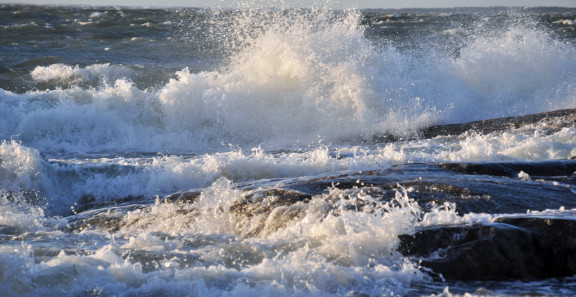Marine energy production, and offshore wind power in particular, plays an important role in the green transition and in achieving climate goals. However, the construction of offshore wind power capacity has a significant impact on many different industries and functions.
- The Ministry of the Environment has identified the need for maritime spatial planning to examine the overall picture of offshore wind power and other marine energy production. Sitowise will carry out a report for us on the situation and development picture of offshore wind power, which will enable us to start drawing up Finland's maritime spatial plan and building sustainable maritime use, says Tiina Tihlman, Ministerial Adviser.
- The study was based on development pictures of what Finland's offshore wind power could look like in 2035, 2040 and 2050. Based on this, we started working on an outline of the impacts of offshore wind power on maritime industries such as ports, maritime transport, maritime industry, fishing and fisheries, undersea minerals and recreation in archipelago areas such as boating, says Iida-Maria Seppä, Senior Specialist at Sitowise.
The entire Finnish maritime area, including the Åland Islands, was examined. The project described the current state of Finland's maritime energy production and other maritime sectors under review, the development prospects of the offshore wind power sector, renewable energy demand scenarios and the development needs of transmission networks.
- Offshore wind power is not just built for the joy of construction, but investment decisions are guided by the profitability of the project. In other words, sufficient demand and a functioning market for renewable energy must be apparent. At the same time, the key issue is the capacity of transmission networks and the impact of new generation capacity on the common electricity market. Energy storage solutions and market flexibility must also develop in order to even out the variation in electricity production caused by weather, Seppä says.
During the study, it has been identified that the environment and nature are part of the overall picture, but not at the core of this project.
- Our intention was to focus on the industry, and through this we sought to find key synergies and conflicts that required resolution. We recognised that there are many aspects that need to be reconciled as well as adverse effects when building in a marine environment. At the same time, major economic and employment impacts were visible, as well as attention to safety and security of supply.
- The geopolitical crisis has accelerated the need to develop comprehensive solutions for offshore wind power and other energy production. The maritime development picture has changed, and reconciling traditional maritime industries with new sectors that require large space will be a major challenge in the coming years, says Mari Pohja-Mykrä, Coordinator of Maritime Spatial Planning Cooperation.
Spatial data was collected or formed from the work phases
The aim of the review was to provide a top-level and strategic overview. At the same time, issues that need to be studied further were identified.
- If, for example, more offshore wind power production areas were built in the Gulf of Bothnia, maritime routes could be extended, which in turn would increase fuel consumption, which in turn would affect transport costs and thus exports. The aim of the study was to identify such chains of influence and thus to outline the overall picture of offshore wind power.
The overall review was based on extensive literature reviews, which were supplemented with several expert interviews.
- We aim to get to grips with industries and internal trends extensively, also by holding a joint workshop. One of the work phases was a survey on the social and cultural impact on people in coastal areas.
- The use of the sea area is a common concern for society. National objectives are realised in citizens' everyday lives, for example, by changing the recreational use of the sea area, and these changes should be identified in advance. In terms of coordination, it is important to understand where and why conflicts arise, Pohja-Mykrä reminds.
Spatial data was collected or formed from all work phases, which can be used to illustrate and analyse the temporal and spatial effects and dependencies of different development paths. Spatial data sets will continue to be utilised in maritime spatial planning.
- Another major goal of the study was to collect a map service to support marine planning. By collecting data (spatial data and map service) and exporting them to ArcGis Online for maritime spatial planning, we were able to produce a high-quality map service. The map service presents in a visual form the current state and temporal variation of different industries, functions and environment, Seppä says.
The working group involved from Sitowise was extensive, and interdisciplinary cooperation was carried out between business areas.
